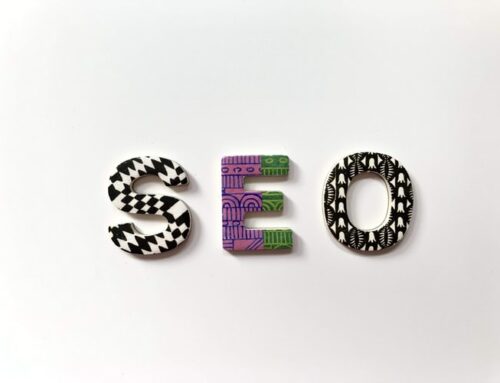If you market online you probably have heard about penalties that Google enforces on some websites that it deems are trying to manipulate its ranking algorithms. Sites that may have enjoyed substantial organic, or free Google traffic, can suddenly lose ground for no apparent reason. Looking under the hood can help you understand more about what might have happened to your traffic and how to get it back. Very often the culprit is a Penguin penalty; which is Google’s way of demoting websites with what are known as ‘toxic link portfolios’. Before we get into more about Penguin and how to prevent this penalty and recover from it, let’s take a look at how Google has evolved its definition of a ‘natural link’ over the years.
In the ‘old days’ (even as recently as 3-4 years ago) Google had a less stringent definition of what it considered a natural link. Certain article submission sites, directories and other sites where a marketer could submit their site to gain links were still acceptable in Google’s eyes. Press releases with keyword rich, do follow anchor text links were still allowed as a means to help build links to a website. Heavy amounts of guest blogging with no real rules in place became a prominent way of pointing links to websites. All of these and many more borderline ‘grey hat’ activities were allowed by Google and marketers took advantage of them to help build link portfolios for their websites.
Penguin Arrives to Battle Link Spam
2012 brought a change to Google’s link development rules. Google Penguin was established to clamp down on websites that had link portfolios top heavy with links that were not gained via natural means (a link gained due to the linked content’s value, not due to someone buying the link or otherwise obtaining it). The following Penguin timeline takes us to where we are today (some SEO practitioners say they detected a new Penguin update in May 2014, but this has not been confirmed by Google):
- Penguin 1 on April 24, 2012 (impacting around 3.1% of queries)
- Penguin 2 on May 26, 2012 (impacting less than 0.1%)
- Penguin 3 on October 5, 2012 (impacting around 0.3% of queries)
- Penguin 4 (AKA Penguin 2.0) on May 22, 2013 (impacting 2.3% of queries)
- Penguin 5 (AKA Penguin 2.1) on Oct. 4, 2013 (impacting around 1% of queries)
How are sites penalized by Google?
Penguin penalizes a site if it has a great number of low value, suspicious, or irrelevant links pointing to it. Any content that appears to have been created for the sole purpose of creating unnatural links will become suspect in Google’s eyes.
If Google warrants it, it will institute a manual penalty (a specific penalty to a particular website that is reported to the site’s owner, which is separate from a Penguin penalty) to sites that have what it deems large numbers of toxic links. If you suspect a problem with a drop in website traffic, it’s a good idea to review your Webmaster Tools data to see if a manual penalty has been imposed by Google on your site. This is a good first place to look for indications that there is a problem.
How to Recover from a Suspected Penguin Penalty
It takes time to recover from a Penguin penalty because a link portfolio audit needs to be performed so a list can be created of the links that need to be removed or disavowed (more on this in a moment). While these processes are being completed, it’s important to at the same time rebuild site trust and authority. This can be done in a number of ways (which we will list shortly), but one of the main activities you need to undertake while you clean up your link profile is the ethical building of links to your website. This will act as a signal to Google that the formerly offending situation is not in place anymore, and that your site is now on the right side of Google Webmaster Guidelines.
The 10 Best Ways to Recover from Penguin
1) Link audit and manual cleanup (please see discussion above).
Please note: Google won’t accept a shortcut to cleaning up your link portfolio. You must make every effort to perform a ‘link detox’ on your link portfolio. Part of this process is contacting webmasters of offending linking sites and asking them to remove toxic links to your site. This is a laborious process but must be done to prove to Google that you have made every effort to clean up the situation.
Once you have completed these efforts to the best of your ability (and often this requires professional help to clean up months or even years of accumulated suspicious link building activities) then you can move to the next stage of the recovery process which is actually disavowing links using Google’s Disavow Tool.
Please note: Don’t just do directly to the disavow tool, you must work to clean up the link portfolio first.
2) Disavow bad links using Google’s Disavow Tool. Create .txt file of links you want to disavow after you download the list of links to your site from your Webmaster Tools account, or a tool such as Majestic SEO.
3) Create content that is worthy of natural backlinks. Write informative pieces that don’t include exact match anchor text.
4) Social media: Seek to help people on Twitter and Facebook, not use these platforms solely for the sake of building sales.
5) Build a solid blog presence by using a monthly content calendar to create link worthy content. Get people talking about you, linking to you, and sharing your content.
6) Work with the BBB to establish or improve your rating. You will need to become accredited by the BBB. This is one trust factor you can work on that will send a positive signal to human users and search engines.
7) Check bookmarking sites to see if your site is associated with spam profiles. If so, ask the sites to take these down.
8) Run a weekly link audit for your site to ensure that the unnatural link accruals go down over time. It will be important to monitor this carefully over the next few months, and then periodically after that. Use backlink checking tools and Google Webmaster Tools to monitor this.
9) If suffering from a Google manual action don’t request reconsideration of your site too soon. Take some time to clean up your act first, as requests for reconsideration without genuine work to clean up your portfolio will not sit well with Google.
10) The very best way to keep your site above the fray when it comes to Penguin, Panda and other search engine update and algorithmic changes is to have Organically Interactive perform a Comprehensive Site Analysis (CSA). This analysis includes a prioritized set of assessments and action steps to fine tune your site from a technical and content perspective. Our site analyses are not your typical short overview documents; they encompass issues affecting your entire site and normally include 40-50 pages of evaluations and recommendations.
Please note: Our CSA comes with an implementation-related conference call and follow-up so you will be able to implement the prioritized recommendations correctly.
Prevention is Key –> Our Penguin Penalty Recovery Steps are also excellent ways to ensure that your site doesn’t get penalized. Staying on the right side of Google’s Webmaster Guidelines not only keeps your site from suffering ranking losses, it also helps you satisfy your target audience through creation and distribution of quality content.
Need help performing an audit and detox for your link portfolio? Our professionals are some of the best in the business at these activities. Please contact us and we will create a custom proposal for you.






 CERTIFIED EXPERT
CERTIFIED EXPERT